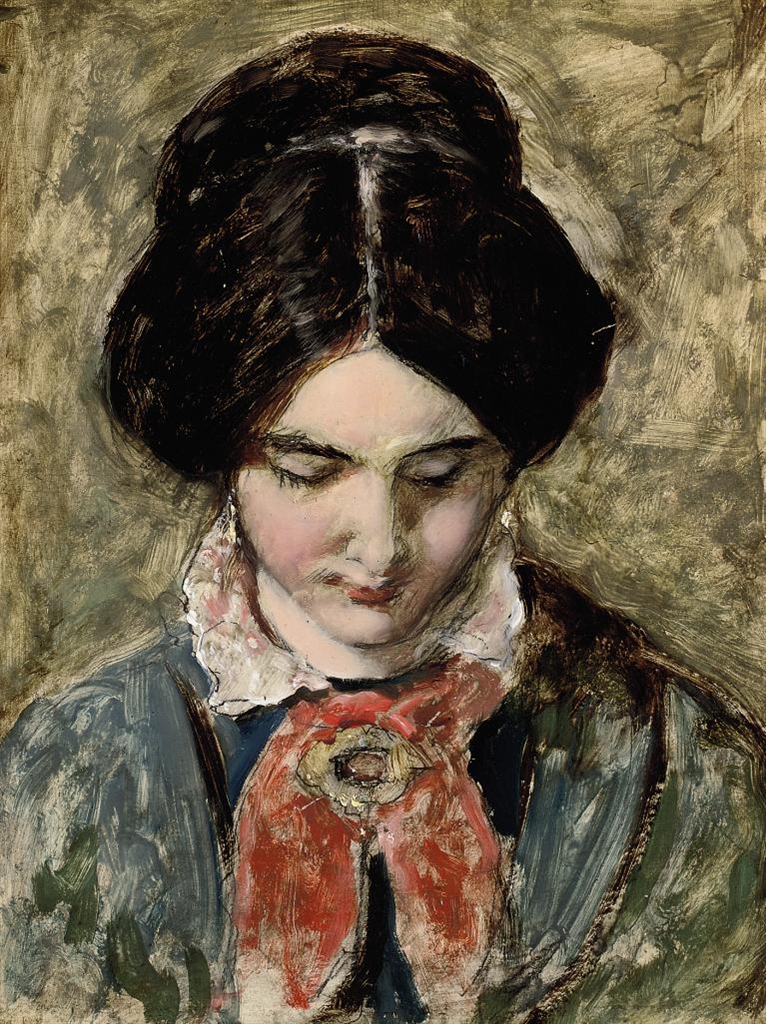William Etty, The Crochet Worker, 1849
19.5 x 15 in.
William Etty (1787-1849) was a British painter who was respected by his peers at the Royal Academy but had little commercial or critical success. Born in York to a poor baker, Etty showed artistic talent from an early age, and after an unpleasant apprenticeship to a printer, he moved to London to apply to the Royal Academy of Arts. He was supported by John Opie and Henry Fuseli who were impressed with his early work. Beginning in 1811, Etty had at least one painting accepted for exhibition at the Academy every year, some of which sold for modest sums. While he gained respect for his rendering of flesh tones, success continued to elude him. He traveled to France and Italy with hopes of improving. Upon returning to England, Etty had success with two history paintings, The Coral Finder: Venus and her Youthful Satellites (1820) and The Triumph of Cleopatra (1821). The success of the latter in particular caused Etty to continue producing history paintings featuring nudes. Although these became his stock and trade, he did occasionally put his hand to other genres. Etty is now considered the first significant English painter of still-lifes and nudes, both female and male. The Crochet Worker, painted in the last year of Etty's life, is to my eye an extremely modern painting. With its loose brushwork and tonality, it could easily have been painted fifty years later, after the innovations of the Impressionists. This young woman is rendered with great feeling and emotional connection, a particularly impressive feat considering that we cannot see her eyes. Despite his lack of success, Etty demonstrates a significant amount of vision and innovation in his work, particularly in this painting.

No comments:
Post a Comment